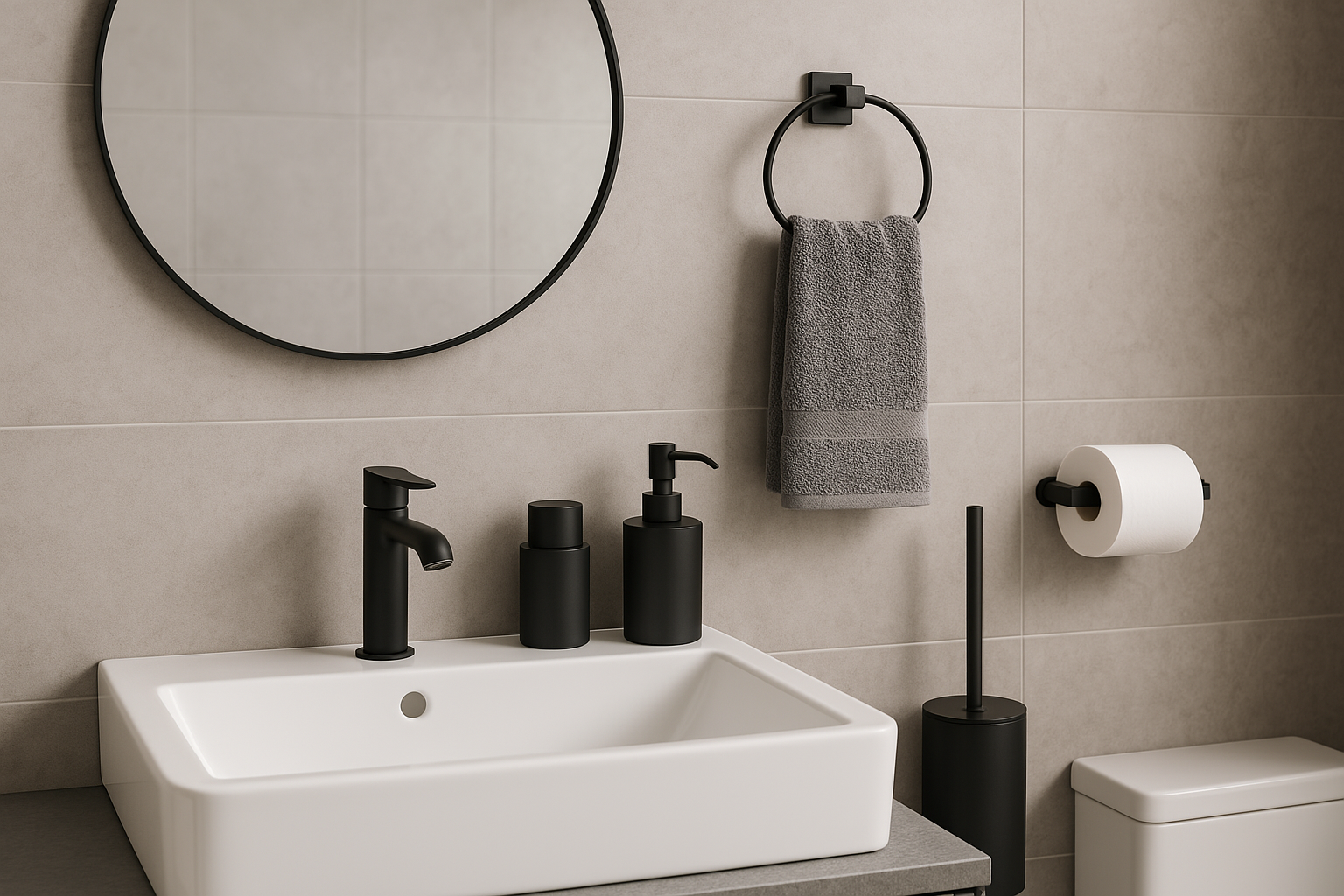
Common Mistakes to Avoid When Buying Bathroom Accessories
A well-designed bathroom can be the most underrated luxury in a home. It’s the space that kickstarts your morning and winds you down at night. Naturally, people put a lot of thought into the fixtures, tiles, and paint—but when it comes to bathroom accessories, things can quickly go sideways.
Whether you're aiming for elegance, minimalism, or a touch of modern flair, choosing the right accessories matters. But it's easy to get carried away, overlook practical details, or invest in the wrong items altogether. To help avoid costly or annoying mistakes, here are some of the most common pitfalls to watch out for—and smarter ways to shop for modern bathroom equipment that actually works for your space.
1. Choosing Bathroom Accessories Just Because They Match
Matching sets can be appealing—they’re coordinated, convenient, and visually consistent. A set with a soap dispenser, toothbrush holder, and waste bin in the same color or material might seem like a safe bet.
But here’s the catch: just because items match doesn’t mean they belong in your bathroom. That black matte set might look great online, but it could clash with your tilework, overwhelm a small counter, or simply not fit the layout.
What to do instead:
Focus on individual function before form. Consider whether each item serves a purpose and fits the space where you plan to place it. Treat your bathroom like a curated space—each element should complement the overall design, not compete with it. Cohesion doesn’t require uniformity.
2. Skipping the Measuring Tape
One of the most common (and preventable) issues happens when people assume something will fit—without actually checking. That chic ladder rack might look ideal in photos, but it could block a cabinet, crowd your vanity, or limit door movement once it’s installed.
Modern bathroom equipment comes in a wide range of sizes, especially with the rise of compact and space-saving designs. It’s essential to compare product dimensions against your available space.
Best practice:
Measure key areas of your bathroom—walls, open spaces, counter depth, and door clearance. Take note of how drawers open and where cabinets swing. Then, cross-reference those measurements with any product you’re considering. A few minutes with a tape measure can prevent a lot of future frustration.
3. Prioritizing Aesthetics Over Usability
There’s no shortage of beautifully designed accessories out there, especially with social media driving trends in home decor. From sculptural toilet paper holders to geometric shelves and ultra-minimalist hooks, design-forward pieces are everywhere.
But design shouldn’t come at the cost of function. A soap dish that constantly tips over, a shelf that can't support much weight, or a mirror with poor lighting can quickly become daily annoyances.
The smarter move:
Aim for a balance of style and utility. A floating shelf may look sleek, but it should also be sturdy enough to hold your essentials. Look for accessories that not only elevate your space visually but are also durable and easy to use. Well-reviewed products designed with usability in mind tend to outlast trendy showpieces.
4. Sacrificing Quality to Save a Few Bucks
Budget-conscious decisions are understandable, especially during a full renovation. However, cutting corners on everyday-use items can backfire. Low-quality materials often degrade quickly in a bathroom’s humid environment. Rust, discoloration, and breakage are common problems with cheap accessories.
For instance, suction cup baskets might fall unexpectedly, and thin plastic hooks often warp or snap under regular use.
What’s worth investing in:
Look for durable materials like stainless steel, tempered glass, sealed wood, or high-grade plastic. These hold up better in moist conditions and provide a more polished, long-lasting look. When shopping, it’s wise to invest in the accessories that get the most use—such as towel bars, caddies, and mirrors—while being more flexible on purely decorative items.
5. Overlooking the Moisture Factor
Bathrooms are naturally damp, and this should influence every purchasing decision. Yet, many people still install wooden shelving without proper sealing, or store fabric bins under the sink where leaks or humidity can cause damage over time.
The fix:
Choose moisture-resistant materials from the start. Teak, treated bamboo, stainless steel, and plastic composites tend to perform better in wet environments. If you're installing electronics like mirror lighting or smart devices, make sure they’re rated for bathroom use. Ignoring this factor can lead to fast wear and safety concerns.
A Smarter Way to Accessorize
In the end, shopping for bathroom accessories is about more than picking out stylish items. It’s about creating a space that reflects your style while meeting your everyday needs. Small oversights—like skipping measurements or buying based on aesthetics alone—can lead to clutter, poor functionality, or regret.
Taking the time to evaluate each item’s practicality, durability, and fit within your existing layout can make all the difference. Think of it as designing a space that doesn’t just look good in photos, but actually works—day in and day out.
Pro Tip to Leave With:
Before buying any accessory, ask three simple questions:
1. Does it solve a problem or add convenience?
2. Will it hold up in a bathroom environment?
3. Does it fit the space, both in size and style?
If it ticks all three, you’re on the right track.